Last week’s Fashion Revolution Week highlighted a lot that is wrong with the fashion production industry, from overseas deplorable wages and working conditions, to the costs of fast fashion, and the clamor for eco-friendly fashions. I wanted to take a moment to describe why we at Whispirit have been working feverishly to produce our new form of fabric production, collage.
I blogged about the workshop I attended hosted by JoAnne Manzone in Ashland, Oregon with the talented textile maker Melissa Arnold. I chose this workshop to attend because I was wowed by what I saw Melissa making. It was, well, fashionable. Beautiful colors, creative and unusual abstract designs, it was like looking at a wearable Picasso.
I was also drawn to this form of felting because it utilizes bits and pieces of leftover fabric, string, selvages, yarns, weavings… things that would be discarded from the more typical fabric design world. The waste in the world of fashion is an enormous issue, both in the creation of fashion of all types and in the disposal of fashion items when they fall out of “cool.”
Since our inception, we at Whispirit have purchased interesting scarves and wraps from secondhand shops. I have also, since leaving the office world, begun to “repurpose” fabric from my old clothes and scarves. Here are a few photos of some of the items we made from repurposed fabrics. Alas, they are one of a kind; when gone, there is no reproducing even a “similar” of these fabrics.
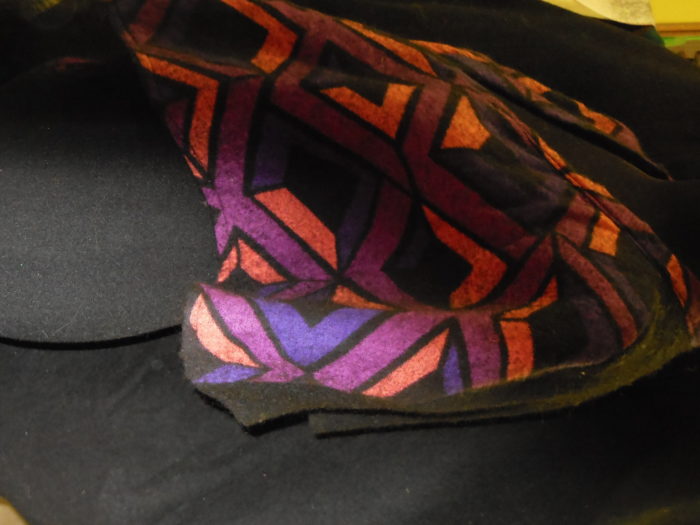
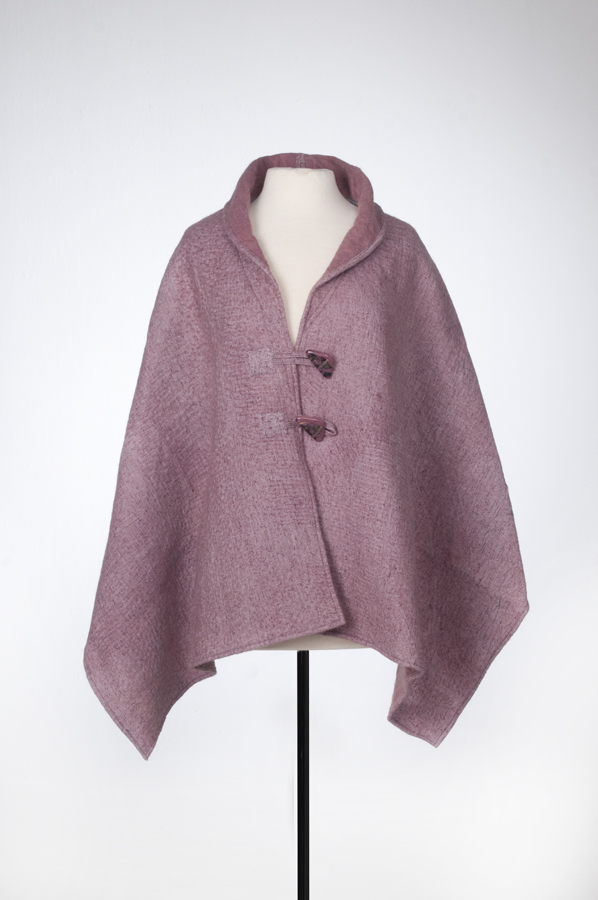
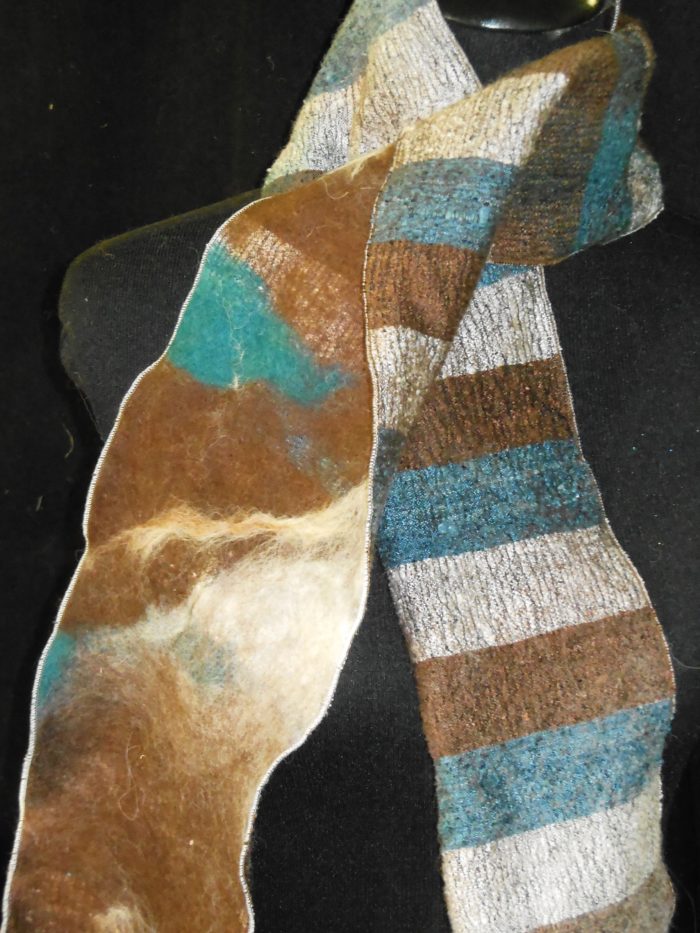
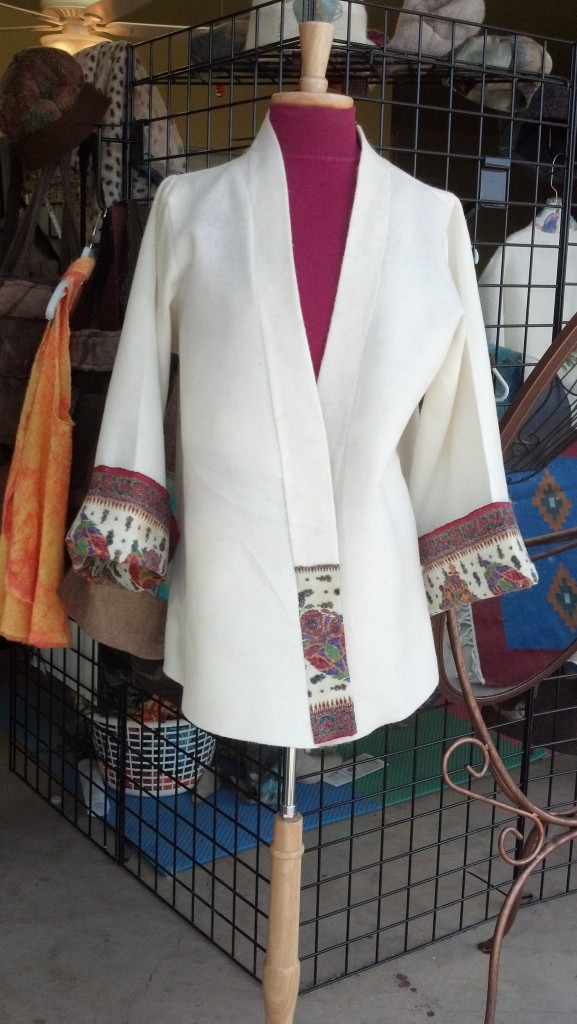
But this collage technique moves recycling to a totally different level. It begins with a prefelted piece of alpaca/merino wool made with our fibers and our FeltLOOM. We lay colorful pieces of roving made by me, or bought from handcrafters, very lightly on top. Then the fun begins.
I begin by piling up my worktable with bits and pieces of fabric that I think would look interesting together. Cutting or tearing pieces, I lay them on the layer of the loose fibers, laying them out like a puzzle until I find the wave of the design. I run that through our FeltLOOM several times to fasten down the pieces. Overlaid with a soluble stabilizer like Solvy, I free motion-stitch all over the piece with matching or contrasting thread. After washing the stabilizer out, I then finish the felting with either traditional wet felting techniques that require very little water, or with a simple bounce around the drier.
It always ends by “whomping” the still wet fabric on the table for a little while. (Whomping is a term Lee claims comes from Nebraska.)
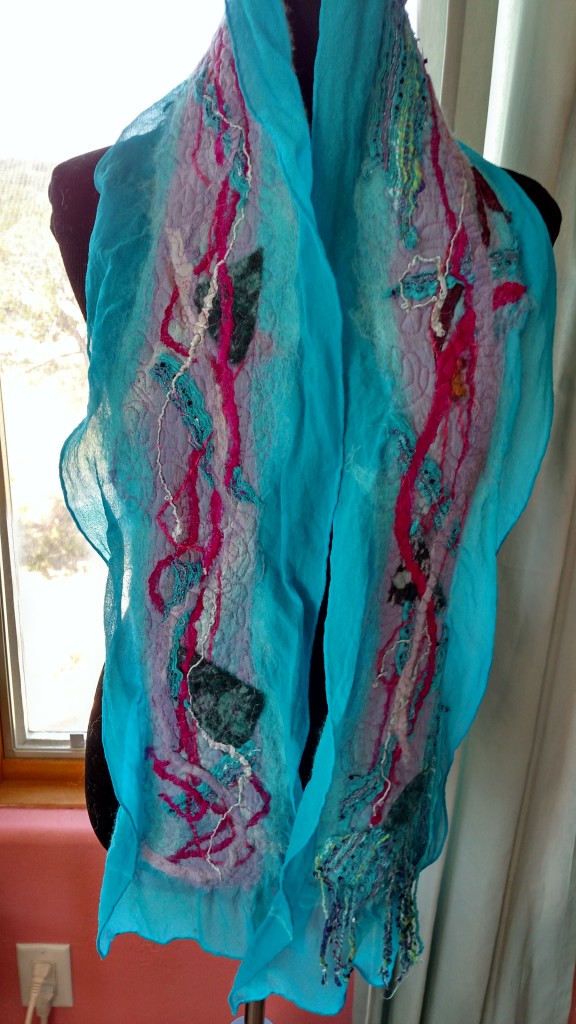
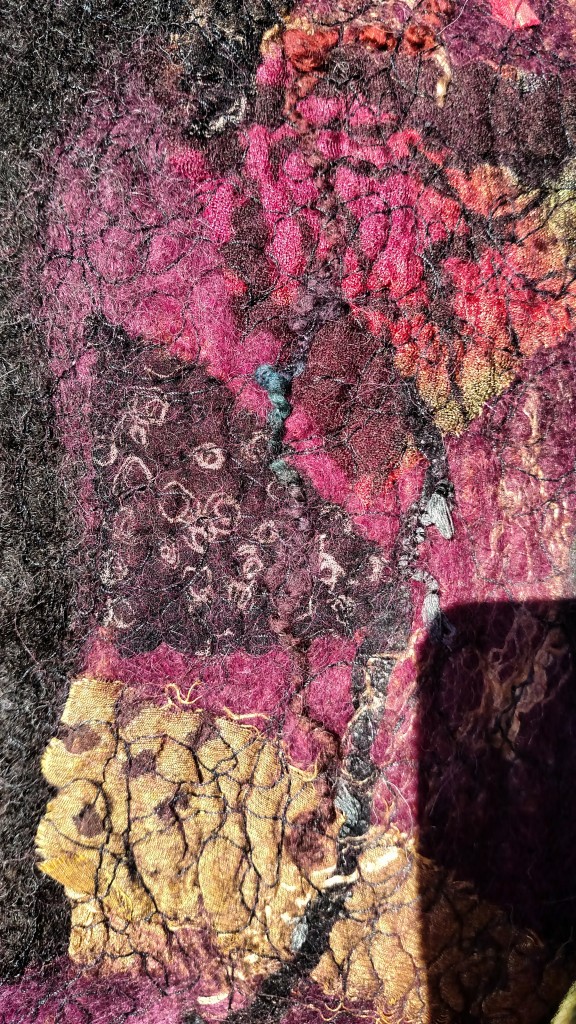
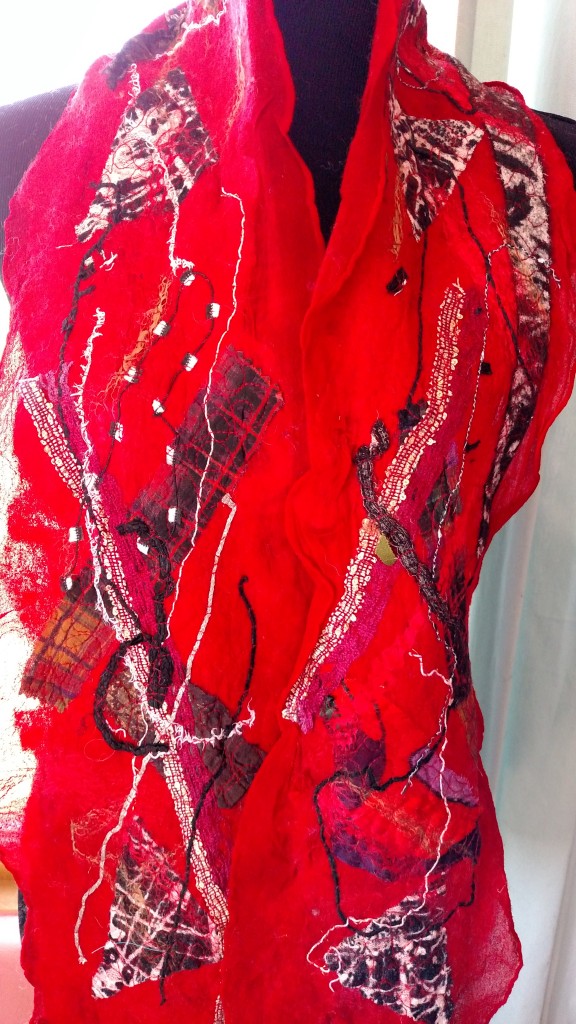
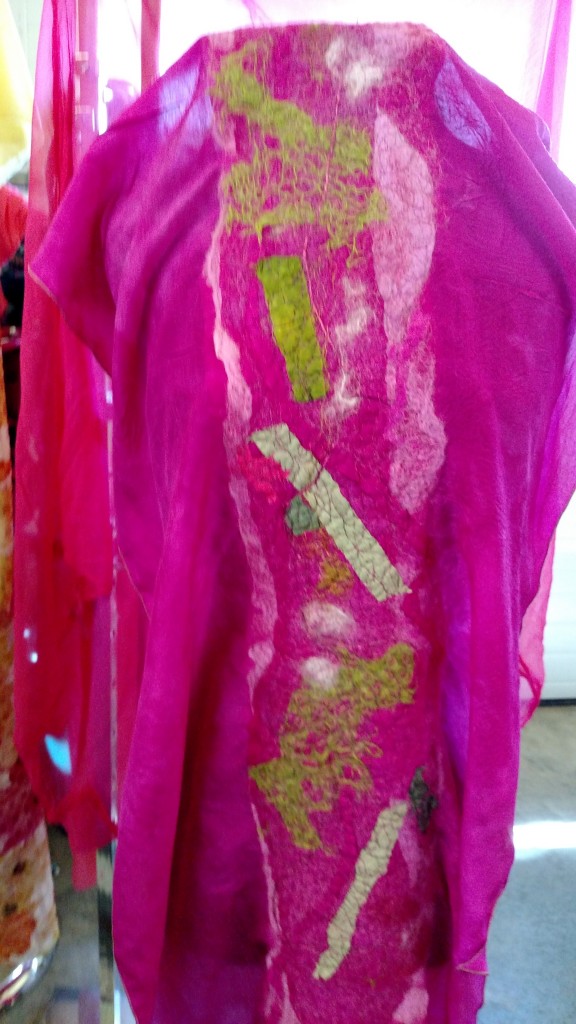
It is a nice simple workout, I get lots of steps on my FitBit and I end up with an eco and fashion friendly one of a kind fabric. “Whomping” is a great stress release, particularly when one works with one’s husband.

Leave a Reply